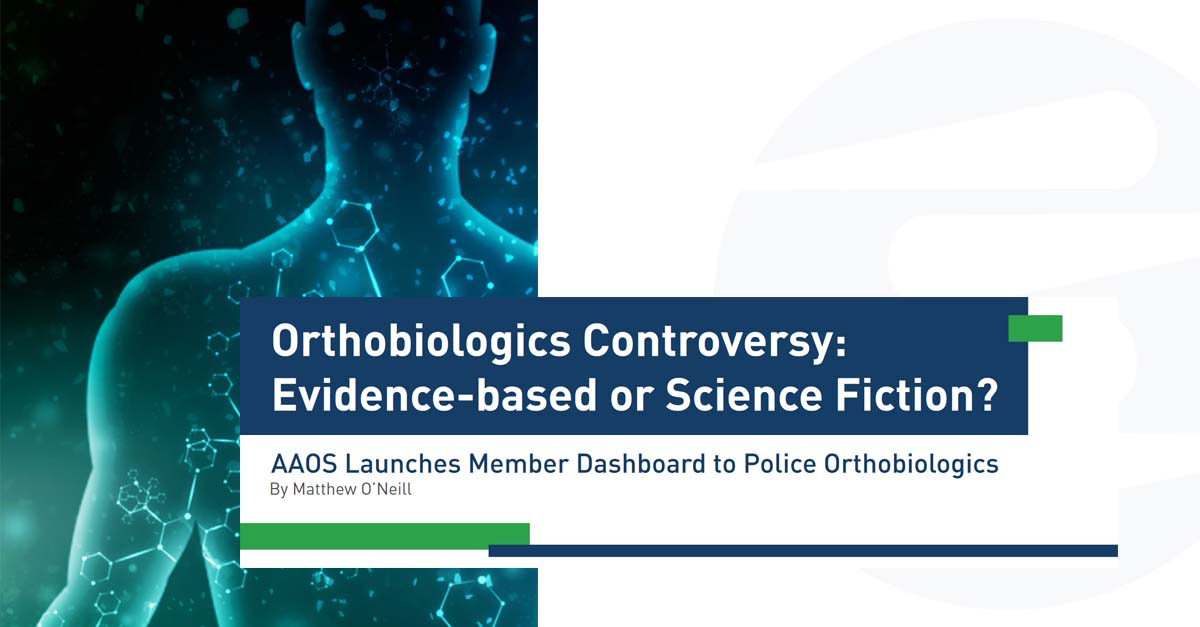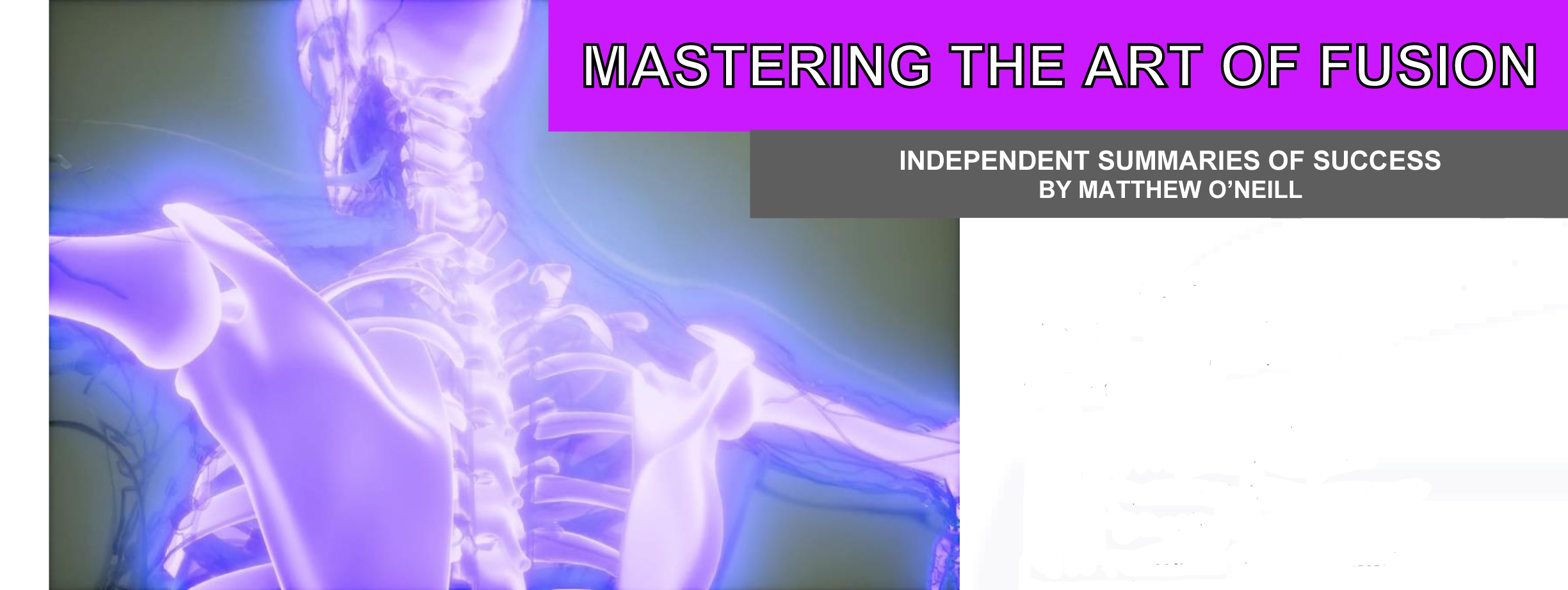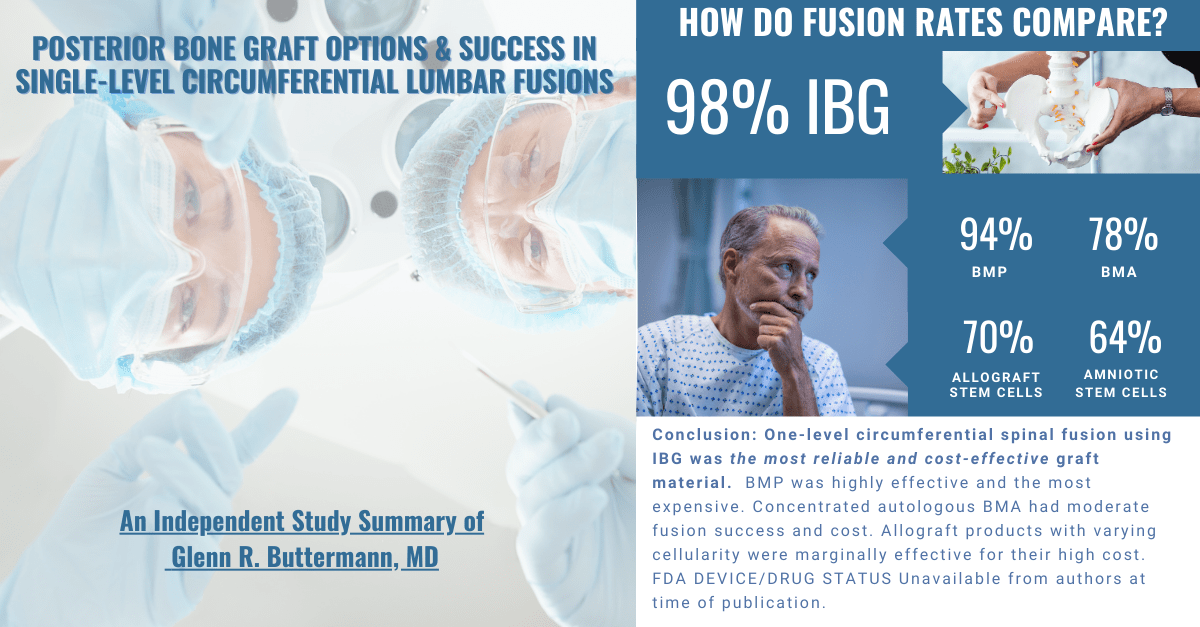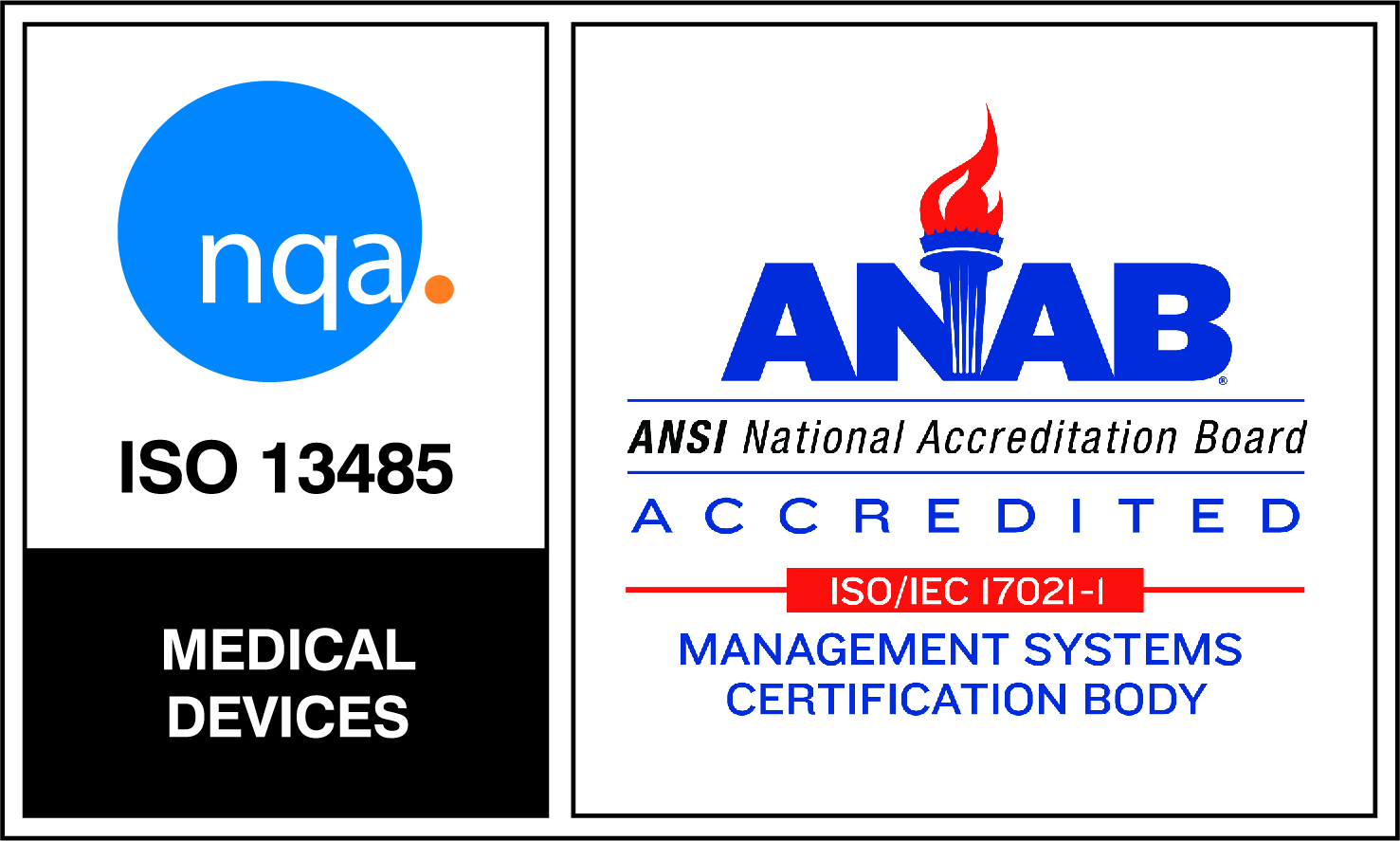"Outcomes With Trephine Techniques" Dr Robert McLain
- Paradigm Biodevices Inc.
- Our Blog
- Hits: 5538
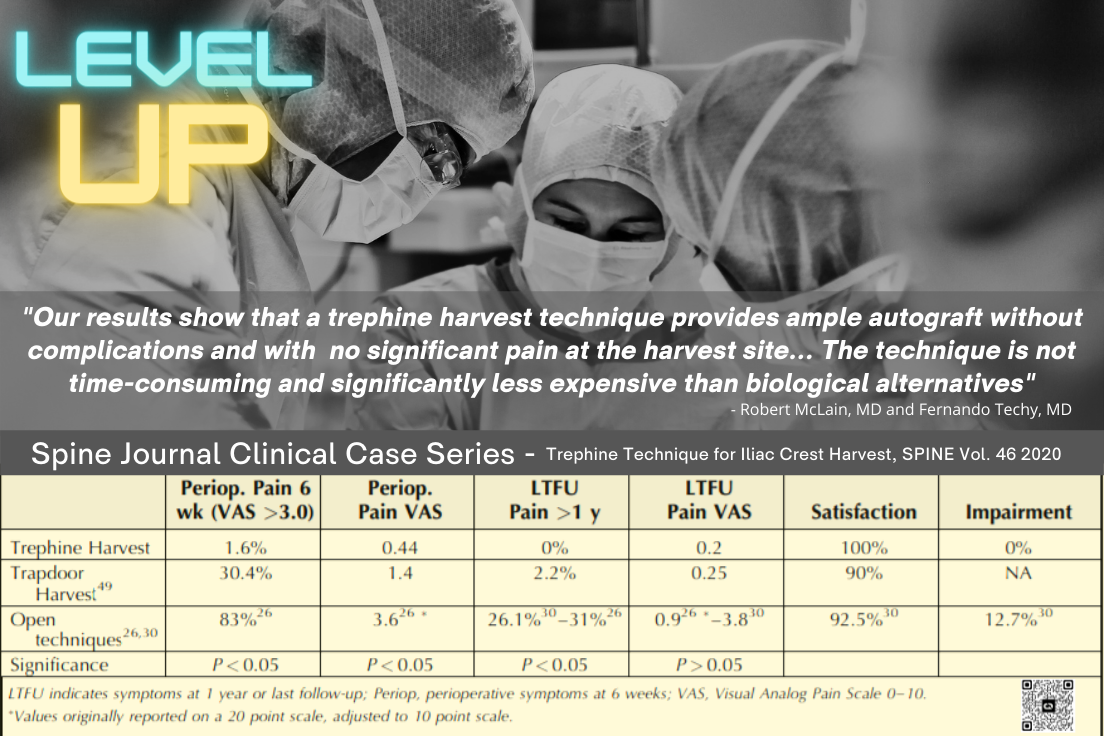
Utilize MIS Techniques for your bone gaft patients. Discover our Bone Harvester here.
This paper is only available as a PDF. To read, Please Download here.
Study Design.
Report of surgical technique and long-term outcome; review of prospectively gathered data and follow-up survey of patient cohort.
Objective.
The aim of this study was to review surgical technique for a trephine graft harvest technique and assess perioperative complications/pain, long-term outcome, and patient satisfaction after anterior iliac crest bone graft (ICBG) harvest for anterior cervical fusion.
Summary of Background Data.
Rates of complications and residual pain after ICBG harvest have reduced its utility as a source of autograft for spinal fusion. Less invasive options reduce morbidity, and trephine harvest is a simple technique, with low morbidity and perioperative and long-term pain. It has not been presented in the peer-reviewed spine literature, and the long-term experience has not been previously reported.
Methods.
Sixty-eight patients undergoing anterior cervical discectomy and fusion (ACDF), using allograft spacers, underwent ICBG harvest using a 3.5 mm trephine by a minimally invasive approach. Perioperative complications, pain incidence and Visual Analog Scale (VAS) were analyzed. Thirty consecutive patients were subsequently surveyed for long-term follow-up regarding pain, function, and satisfaction.
Results.
No perioperative (0–6 weeks) graft-site complications (infection, hematoma, fracture, wound dehiscence) occurred. There were no reoperations, and no treatment required for graft-site complaints. No patient reported clinically significant perioperative pain (>3/10). At long-term follow-up (mean 45 months) no patients reported pain >3/10 at their graft-site, and the mean VAS was 0.20/10. No patient was impaired by graft-site symptoms, and all were satisfied with their graft harvest.
Conclusion.
Trephine graft harvest minimizes soft tissue dissection, periosteal elevation, and cortical disruption. Outcome using this technique eliminated perioperative complications in this study group, and reduced pain in both perioperative and long-term assessments. Compared to historical outcomes, trephine harvest provides sufficient graft with comparable or improved results relative to other minimally invasive approaches, and significantly improved relative to traditional open techniques.
Level of Evidence: 4

